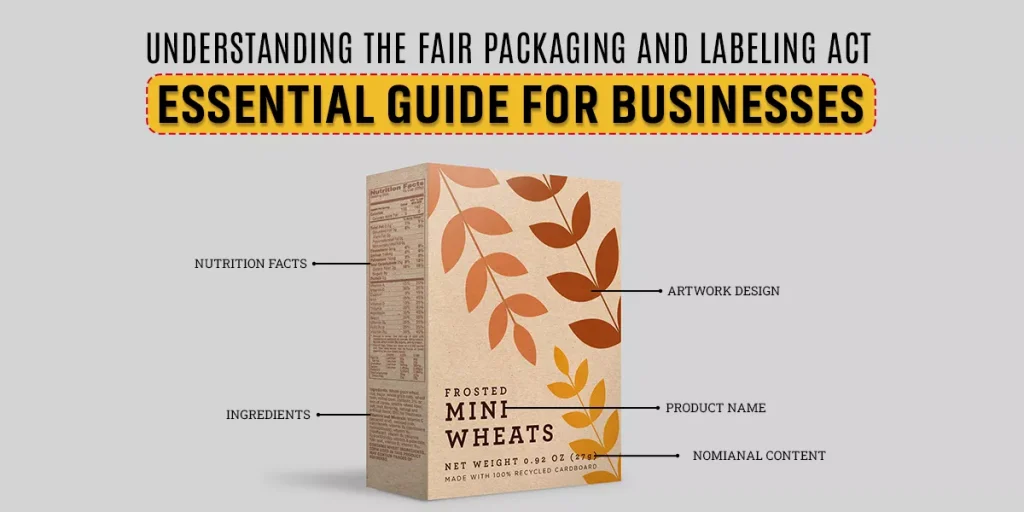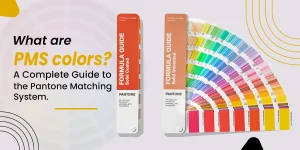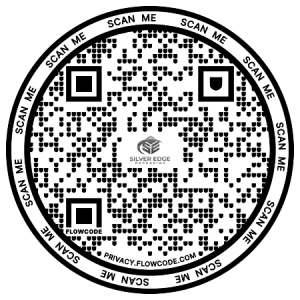An understanding of the Fair Packaging and Labeling Act (FPLA) is essential for businesses to produce and sell different products. It sets the ideal standards for labeling and packaging to maintain customer protection, fairness, and transparency. You need practical tips and insights regarding the necessary requirements of the FPLA for packaging and labeling.
Whether you are running a successful company or starting a new venture, it has become necessary to refine the strategies for excellent packaging labeling to make your products more prominent. This Act also helps you to navigate the different legal complexities to ensure that your products align with regulatory standards and build customers’ credibility.
What is the Fair Packaging and Labeling Act (FPLA)?
The Fair Packaging and Labeling Act (FPLA) was established in 1967. It allows the Food and Drug Administration (FDA) and Federal Trade Commission to release the regulations requiring that consumer products must be labeled correctly. The labeling must disclose the product name, packer, manufacturer, or distributor. It also contains the commodity identity and net content.
This Act also offers additional regulations on demand to avoid customers’ deception, including details of package sizes, lower price labeling, package slack, and ingredients. In the USA, The Office of Weights and Measures of the National Institute of Standards and Technology has the authority to promote uniformity in the federal and state regulations.
Regulatory Bodies For Packaging and Labeling
The Federal Trade Commission and Food and Drug Administration are known as primary regulation bodies.
Federal Trade Commission (FTC)
FTC is one of the fundamental regulators that enforces the Fair Packaging and Labeling Act.
- Monitor Advertising Practices: It is important to ensure that product marketing campaigns and claims are real, not misleading. It consists of the claims available on the labeling and packaging.
- Consumer Safety: it is very important to protect customers from unfair and deceptive business practices by implementing regulations to ensure the accuracy and transparency of product labeling.
- Compliance and Enforcement: It is a good approach to analyze complaints, conduct inspections, and take legal actions against businesses that violate the packaging and labeling requirements.
Food and Drug Administration (FDA)
FDA also plays an important role in implementing the FPLA, especially for medical devices, cosmetics, drugs, and food. FDA labeling guidance is mentioned below:
- Regulatory Labeling Requirements: It is essential to set and enforce FDA regulations on nutrition labels for health warnings, usage instructions, nutrition facts, and ingredients. The core purpose is to ensure the accurate representation and safety of products.
- Product Protection: An overview of product safety is needed to ensure that labels provide the required details to ensure a healthy lifestyle for the customers.
- Inspection and Enforcement: It allows you to conduct the necessary inspections and regular compliance checks to ensure that companies follow the FPLA guidelines. The FDA is usually capable of releasing different penalties, such as fines and warnings for non-compliance.
Both the FTC and FDA packaging labeling requirements ensure that businesses follow the standards of FPLA to promote fair competition and consumer safety in the competitive market.
Basic Requirements for Labeling and Packaging

- Commodity Identity: The label must provide information about the products on the packaging for the easiest identification.
- Distributor, Packer, or Manufacturer Details: The label on the packaging must inform the consumers about the name and address of the company. It offers the customers with manufacturers’ contact details for concerns or queries regarding the products.
- Net Content Quantity: The label must state the amount of product in metrics such as liters, grams, pounds, or ounces. This information will enable the customers to compare products and make quick purchasing decisions.
Additional Regulations
The Fair Labeling Act offers additional regulations to ensure fairness and customer protection. Customized boxes wholesale price allows you to use cost-effective packaging while complying with the following guidelines.
- Safeguard Consumer Deception: Labels provide accurate descriptions of product ingredients. It is prohibited to use omissions, exaggerated claims, and misleading descriptions to deceive customers.
- Slack Fill Regulations: It is important to ensure that packaging does not include the non-functional slack fill, which differentiates between product volume and container capacity. The empty without a legitimate purpose is known as deceptive, and that is not allowed.
- “Cents-Off” Promotions: The packaging must indicate the nature of the promotion when promotional price reductions such as “cents-off” are implemented. This label specifies the final price, discount amount, and original price. It is important to maintain transparency and avoid misleading marketing practices.
These additional guidelines allow the companies to ensure customer trust through the fair and accurate presentation of labeling on the packaging for the products. Businesses need to adhere to these laws to avoid legal challenges and build strong relationships with customers.
Purpose and Benefits
Purpose
- Value Comparisons: FPLA ensures clear labels to provide authentic information about the content and quantity of products. This transparency offers the easy comparison of different products, allowing consumers to make well-informed decisions.
- No Deceptive Packaging: With the regulation of the descriptions and packaging practices, FPLA safeguards the customers from deceptive promotional strategies and misleading information.
Benefits for Consumers
- Improved Transparency: Customers get transparent and truthful access to product information such as manufacturer information, quantity, and ingredients of products.
- Informed Decisions: Clear labeling allows customers to compare different products to buy the best one in accordance with their preferences and requirements.
- Enhanced Trust: Honest and consistent labeling practices develop the customer’s trust in different brands and products.
Benefits for Businesses
- Comply with Regulations and Avoid Legal Problems: Businesses adhering to these regulations can get rid of various penalties, including fines for not complying with the FPLA laws.
- Market Credibility: Businesses that follow a consistent approach to providing transparent and accurate information will build customer loyalty and improve their brand reputation.
- Competitive Edge: Brands emphasizing honest and clear packaging can make their unique identities to engage potential customers who prefer integrity and transparency.
Conclusion
The comprehensive understanding of Fair Packaging and Labeling Act (FPLA) helps you to create and use the packaging for your products in accordance with guidelines of FTC and FDA. The basic requirements and additional regulations are beneficial for the consumers and businesses.















